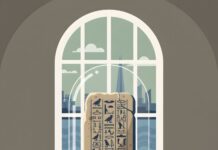The Outlander TV series, based on the novels by Diana Gabaldon, has transformed itself from a historical romance drama into a genuine tourism phenomenon. Since its premiere in 2014, it has not only won the hearts of millions of viewers, but also had a real impact on the economy and image of Scotland.
Tourism Boom
Interest in the locations where the series was filmed has increased by 44% to 226% depending on the region.
Places previously unknown to tourists, such as Doune Castle (used as Castle Leoch), Culross village and Duntar Castle. now regularly welcome fans from all over the world. The filming locations have become must-see destinations, and travel agencies have begun offering entire tours of “Outlander locations”.
More than Harry Potter and Braveheart
The impact has been so significant that analysts have compared it to the impact of Harry Potter and Braveheart.
However, in some ways, Outlander has even surpassed these iconic franchises: the tourism growth has been more targeted and linked to real locations, rather than just the general image of the country.
Economic Impact
The series is estimated to have added tens of millions of pounds to the Scottish economy, thanks to growth in the hotel, restaurant, transport, and service industries. Locals say the influx of tourists has helped small businesses and stimulated infrastructure development.
The Role of the Fan Community
Outlander fans have become an integral part of the “Outlander craze,” creating festivals, cosplay parties, and active online forums where they discuss the plot, share trips to filming locations, and build a global community. Such initiatives not only generate revenue for local economies, but also cement the series as a cultural asset.
Cultural Heritage and Identity
Culturally, Outlander has played an even deeper role. Not only has the series shown viewers the beauty of the mountains, lochs and castles, but it has also popularised Scottish history: clan culture and the Gaelic language.
For many viewers, Outlander was their first introduction to Scottish traditions and the history of the Jacobite uprisings of the 18th century.
Challenges of Mass Tourism
Of course, there are challenges.
The growth of tourism sometimes leads to overload of small villages or castles that are not designed for large crowds. Yet the authorities and travel agencies try to distribute the flows, offering alternative routes and expanding infrastructure.
Outlander has become an example of how a modern TV series can influence the economy of an entire region. If Harry Potter created a magical London, then Outlander literally opened the real Scotland to the world. This is a successful combination of cinema, history, and national branding: the country received not only an increase in tourism, but also a strengthening of its cultural identity.
Looking ahead, it is precisely such projects, where the artistic world is closely intertwined with real locations, that will drive cultural tourism than anything else.
Read the Latest Articles on DET!
Suez on Rails: China is Changing the Map
Plucked Out of Thin Air? How Meteorologists Name Storms
I Need My Labubu: Wang Ning’s Billion Dollar Toy





